Babe is a Portuguese civil parish in the municipality of Bragança. The population in 2011 was 238, in an area of 25.62 km².

Vila Franca do Campo is a town and municipality in the southern part of the island of São Miguel in the Portuguese Autonomous Region of the Azores. The population of the municipality was 11,229 in 2011, in an area of 77.97 km². The town proper, which incorporates the urbanized parishes São Miguel and São Pedro, has 4100 inhabitants.
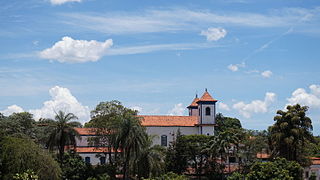
Sabará is a Brazilian municipality located in the state of Minas Gerais. The city belongs to the Belo Horizonte metropolitan region and to the associated microregion.
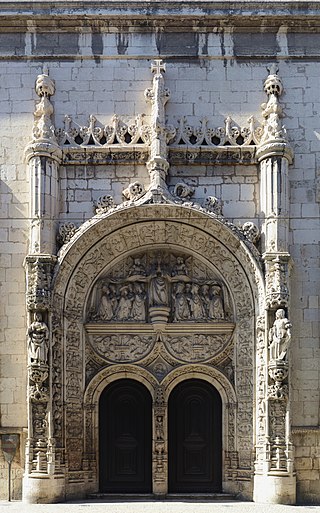
The Church of Nossa Senhora da Conceição is a church in the civil parish of Madalena, in the municipality of Lisbon.

Paderne is a village and civil parish in the municipality (concelho) of Albufeira, in the Portuguese region of Algarve. The population in 2011 was 3,304, in an area of 52.56 km².

The Church of Our Lady of Sorrows is a Roman Catholic church in Póvoa de Varzim, Portugal. It is located in Largo das Dores square, in the old town of Póvoa de Varzim, and is part of the parish of Matriz. The church is dedicated to Our Lady of Sorrows, Nossa Senhora das Dores in Portuguese.
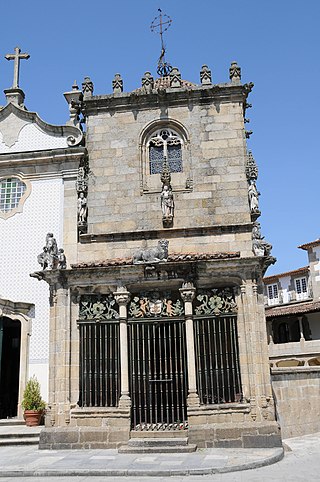
The Chapel of the Coimbras is a Manueline chapel located in the civil parish of São João do Souto, in the municipality of Braga. It has been classified as a National Monument since 1910.
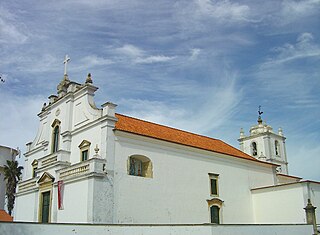
The Church of Our Lady of Light is a church situated in civil parish of Lagoa and Carvoeiro, in the municipality of Lagoa, in the Portuguese Algarve region, situated in the urban centre.

The Our Lady of the Immaculate Conception Church is located in Panjim, Goa, India. The Church conducts Mass every day in English, Konkani, and Portuguese.
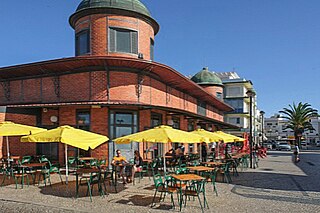
Olhão is a civil parish in the municipality of Olhão, in the Portuguese Algarve. The population in 2011 was 14,914, in an area of 12.25 km². Olhão is the largest parish by population density in the municipality.
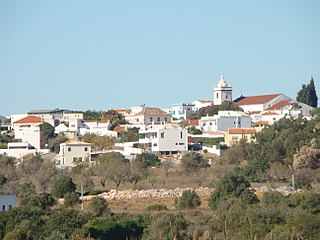
Mexilhoeira Grande is a civil parish in the municipality (concelho) of Portimão in the southern Portuguese region of the Algarve. The population in 2011 was 4,029, in an area of 91.15 km².
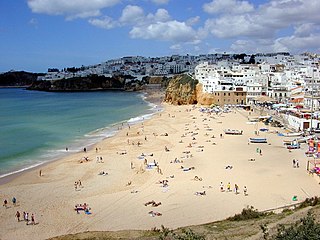
Albufeira is a city and seat of its own municipality in the district of Faro, in the southernmost Portuguese region of Algarve. The municipality population in 2021 was 44,158, in an area of 140.66 square kilometres. The city proper had a population of 28,645 in 2021. It is 250 kilometres (160 mi) from Lisbon, and is within close proximity of Paderne Castle. Lagoa is located 30 kilometres (19 mi) to the west, and Faro 45 kilometres (28 mi) to the south-east. A tourist destination, Albufeira expands to approximately 300,000 residents during the summer and during the Christmas and New Year celebrations, owing to the number of hotels and lodgings in its municipality, that includes marina facilities, golf courses, restaurants and bars for the annual flood of visitors.

The Church of Nossa Senhora do Rosário is a 16th-century Azorean temple in the civil parish of Nossa Senhora do Rosário, municipality of Calheta, being reconstructed after the Mandado de Deus earthquake that affected the islands of São Jorge and Pico.
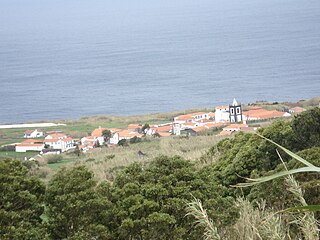
The Church of Santa Bárbara is a church in the civil parish of Cedros, municipality of Horta, on the Portuguese island of Faial in the archipelago of the Azores. Its parish falls within the Roman Catholic Diocese of Angra, and serves the parishioners of the northern coast from the border with Salão to Ribeira Funda.

The Church of Nossa Senhora dos Milagres is a Portuguese 16th-century church located in the municipality of Vila do Corvo, on the island of Corvo in the archipelago of the Azores.
Conceição e Estoi is a civil parish in the municipality of Faro, part of the Portuguese Algarve, formed in 2013 from the merger of the former parishes Conceição and Estoi. The population in 2011 was 8,176, in an area of 68.40 km².

Churches and Convents of Goa is the name given by UNESCO to a set of religious monuments located in Goa Velha, in the state of Goa, India, which were declared a World Heritage Site in 1986.

The Church of Our Lady of the Rosary of Black Men is an 18th-century Roman Catholic church located in São Cristóvão, Sergipe, Brazil. The church is located on Rua Cel. Erondino Prado 187. It is one of numerous churches across Brazil constructed by the Afro-Brazilian brotherhoods associated with Our Lady of the Rosary. The Church of Our Lady of the Rosary was listed as a historic structure by National Institute of Historic and Artistic Heritage (IPHAN) in 1943. It is located near, but not within the zone of São Francisco Square UNESCO World Heritage Site.
The Church of Our Lady of the Rosary is an 18th-century Roman Catholic church located in Vila Velha, Espírito Santo, Brazil. It is one of numerous churches across Brazil constructed by the Afro-Brazilian brotherhood associated with Our Lady of the Rosary. The Church of Our Lady of the Rosary in Vila Velha was listed as a historic structure by National Institute of Historic and Artistic Heritage (IPHAN) in 1950.

The Church of the Third Order of Our Lady of the Rosary of the Black People is an 18th-century Roman Catholic church in Salvador, Bahia, Brazil. Construction of the church took almost 100 years. It is dedicated to Our Lady of the Rosary and belongs to the Archdiocese of São Salvador da Bahia. The church was listed as a historic structure by National Institute of Historic and Artistic Heritage (IPHAN) in 1938 and is part of the Historic Center of Salvador UNESCO World Heritage Site.























